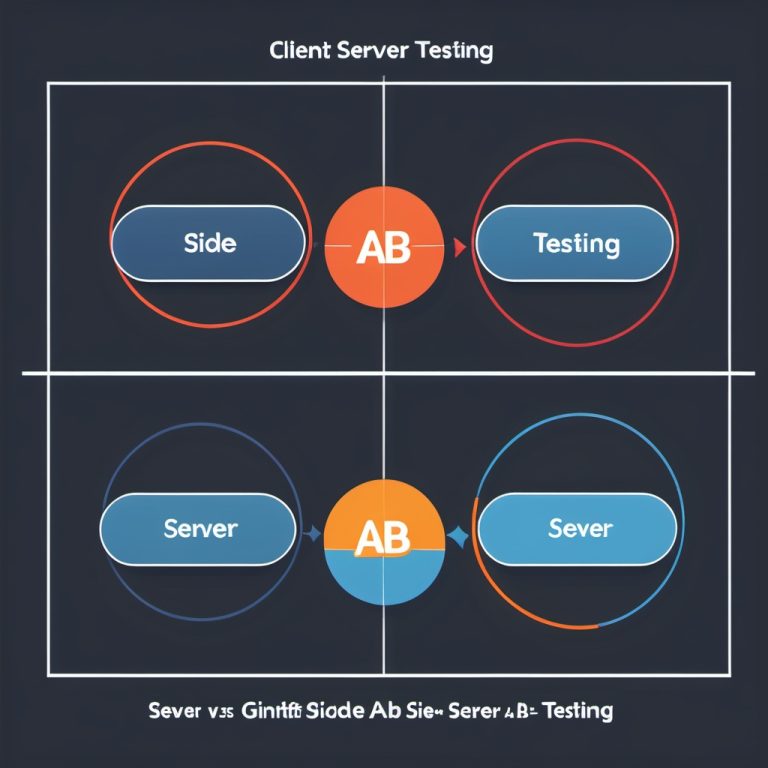Decoding A/B Test Duration: A Guide to the Top Calculators
A/B testing, the bedrock of data-driven decision-making, empowers businesses to optimize their websites and apps for conversions.
But a crucial question often arises: how long should an A/B test run? Too short, and you risk drawing inaccurate conclusions due to insufficient data. Too long, and you might miss out on valuable opportunities or delay implementing improvements. This is where A/B testing calculators come into play, providing the statistical horsepower to determine the optimal test duration. This article explores the importance of calculating test duration and delves into some of the top A/B testing calculators available.
Why Calculate A/B Test Duration?
Running an A/B test without a pre-determined duration is like navigating without a map. You might stumble upon the right path eventually, but you’ll likely waste time and resources along the way. Calculating test duration offers several key benefits:
- Statistical Significance: Calculators help determine the minimum sample size needed to achieve statistical significance. This ensures that the observed differences between variants are not due to random chance but reflect a genuine impact.
- Sufficient Power: Statistical power refers to the probability of correctly identifying a true effect. Calculators help ensure your test has enough power to detect meaningful changes, preventing you from missing out on real improvements.
- Resource Optimization: By estimating the required duration, you can allocate resources effectively and avoid running tests longer than necessary. This frees up time and resources for other optimization efforts.
- Data-Driven Decisions: A calculated test duration provides a clear endpoint, allowing you to make data-driven decisions based on statistically sound results. This eliminates guesswork and subjective interpretations.
- Minimizing Opportunity Cost: Running a test longer than necessary means you’re potentially missing out on the benefits of implementing a winning variant. A calculated duration helps minimize this opportunity cost.
Key Factors Influencing Test Duration:
Several factors influence the ideal duration of an A/B test:
- Baseline Conversion Rate: The existing conversion rate of your control variant plays a significant role. Lower conversion rates generally require longer test durations to achieve statistical significance.
- Minimum Detectable Effect (MDE): This is the smallest change in conversion rate that you want your test to be able to detect. Smaller MDEs require larger sample sizes and, consequently, longer test durations.
- Statistical Significance Level (Alpha): This represents the probability of observing a difference when there is no real difference (Type I error). Commonly set at 5% (0.05), it indicates a 5% chance of falsely concluding that a variant is better.
- Statistical Power (1-Beta): This is the probability of correctly detecting a real difference. A higher power (e.g., 80% or 90%) requires a larger sample size and longer test duration.
- Traffic Volume: Higher traffic volumes allow you to gather data more quickly, potentially shortening the test duration. Conversely, lower traffic volumes necessitate longer tests.
Top A/B Testing Calculators:
Numerous A/B testing calculators are available online, each with its own strengths and features. Here are some of the most popular and reliable options:
- Evan’s Awesome A/B Tools: This calculator, created by Evan Miller, is a widely respected and user-friendly tool. It allows you to input your baseline conversion rate, MDE, statistical significance level, and power to calculate the required sample size and test duration. It also provides insights into the statistical significance of your results after the test has concluded.
- VWO A/B Test Duration Calculator: VWO, a popular A/B testing platform, offers a robust calculator that considers various factors, including traffic volume and average daily visitors. It provides a recommended test duration based on your specific inputs.
- Optimizely Sample Size Calculator: Similar to VWO’s calculator, Optimizely’s tool helps you determine the necessary sample size and test duration for your A/B tests. It offers a clear and concise interface for inputting your test parameters.
- Convert Calculator: Convert, another leading A/B testing platform, provides a calculator that focuses on statistical power and significance. It helps you understand the relationship between these factors and their impact on test duration.
- AB Tasty A/B Test Calculator: AB Tasty’s calculator offers a user-friendly interface and considers factors like baseline conversion rate, MDE, and statistical significance level. It provides a recommended test duration and sample size.
Using A/B Testing Calculators Effectively:
While calculators provide valuable guidance, it’s essential to use them judiciously:
- Accurate Inputs: Ensure that the inputs you provide to the calculator are accurate and reflect the real-world conditions of your test. Inaccurate inputs will lead to unreliable results.
- Consider External Factors: Calculators don’t account for all external factors that might influence your test results. Seasonal variations, marketing campaigns, and competitor activity can all play a role.
- Don’t Rely Solely on Calculators: While calculators are helpful, they shouldn’t be the only factor determining your test duration. Consider other practical considerations, such as business cycles and the availability of resources.
- Monitor Your Tests: Even with a calculated duration, it’s essential to monitor your tests regularly. If you see statistically significant results earlier than expected, you might choose to end the test early.
- Iterate and Learn: A/B testing is an iterative process. Use the insights gained from each test to refine your optimization strategies and improve your understanding of your audience.
Beyond the Calculator:
While calculators are invaluable tools, understanding the underlying statistical principles is crucial for effective A/B testing. Familiarize yourself with concepts like statistical significance, power, and the minimum detectable effect. This knowledge will empower you to interpret results more accurately and make informed decisions.
Conclusion:
A/B testing calculators are essential tools for any data-driven marketer or optimizer. They provide the statistical foundation for determining optimal test duration, ensuring that your results are reliable and your resources are used efficiently. By understanding the factors that influence test duration and using calculators effectively, you can unlock the full potential of A/B testing and drive significant improvements in your online performance. Remember that calculators are a guide, and combining their output with practical considerations and a solid understanding of statistical principles will lead to the most successful A/B testing outcomes.


